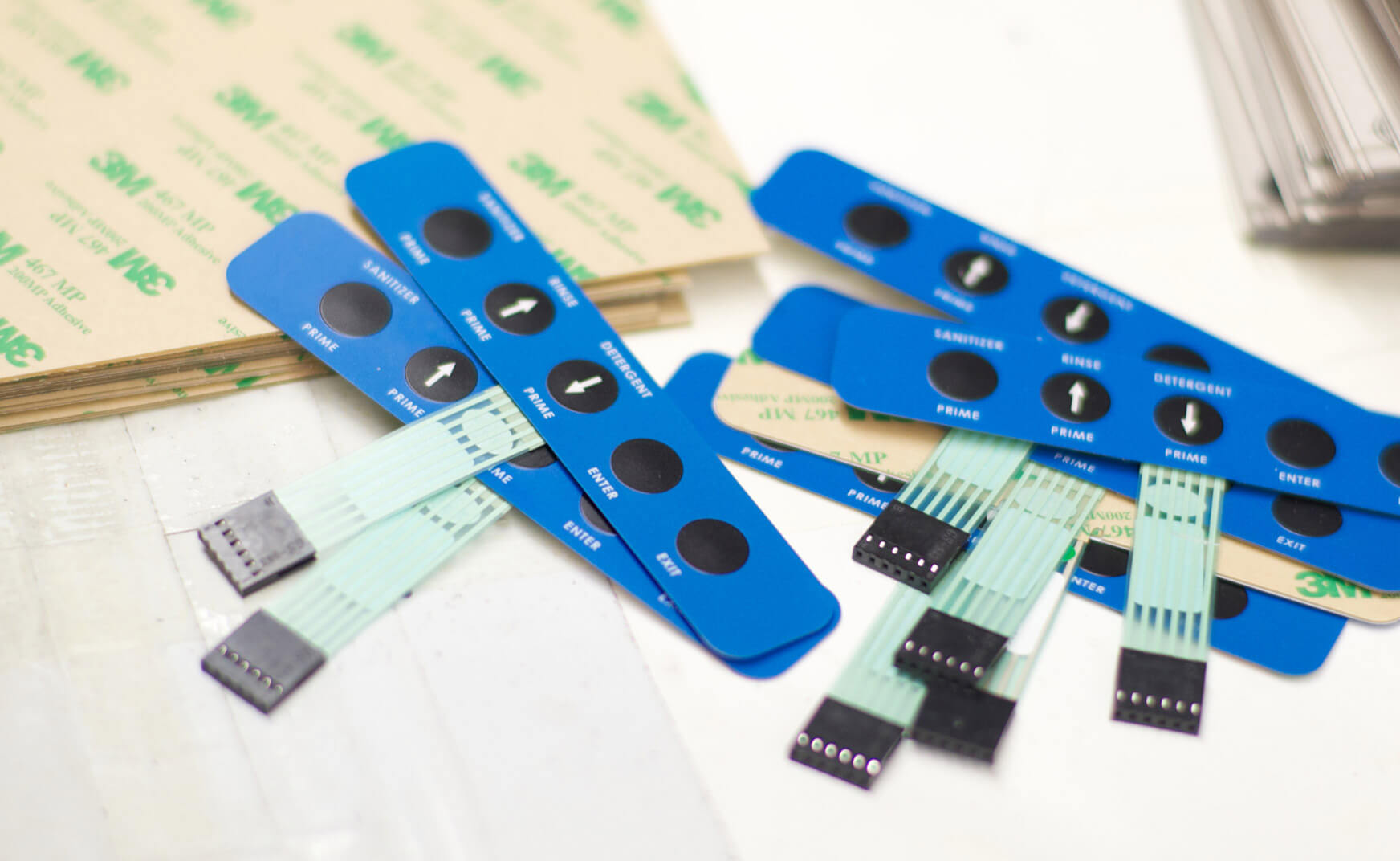Explore Different Types of Membrane Switch Technologies for Your Needs
Just How Membrane Layer Changes Add To the Durability of Electronic Control Panels
Membrane switches play a critical function in enhancing the longevity of digital control panels, mainly through their multi-layered building and construction which offers effective security versus ecological variables such as moisture and dirt. The absence of relocating parts dramatically decreases the chance of mechanical failures, making membrane layer switches perfect for demanding applications.
Meaning of Membrane Switches

Membrane layer buttons are made to be slim and light-weight, making them appropriate for applications where room is limited. They can be produced in different forms, dimensions, and shades, supplying adaptability in style that meets visual and functional requirements. In addition, membrane switches can incorporate various innovations, such as tactile comments and LED signs, enhancing customer experience.
Due to their construction, membrane layer switches are usually resistant to dirt, dampness, and basic wear, adding to their resilience sought after settings. Their seamless design not only facilitates simple cleansing but additionally decreases the threat of mechanical failing, making them a favored choice for makers seeking dependable interface in their digital control panels.
Protection Against Environmental Variables
The design of membrane layer switches inherently gives a degree of security versus numerous ecological elements, which is important for maintaining functionality in tough conditions - Membrane Switch. These buttons are normally built with layers of versatile materials that protect inner elements from dampness, dirt, and pollutants. By encapsulating the wiring, membrane layer switches lessen the risk of brief circuits and rust, which can significantly harm performance
In addition, the use of robust adhesives and sealants during production improves their resistance to environmental challenges. Membrane layer buttons can withstand exposure to chemicals and solvents, making them appropriate for sectors such as food handling and medical care, where health and sanitation are paramount. Their seamless surface style likewise protects against the accumulation of dirt and microorganisms, helping with less complicated cleaning and upkeep.
Temperature level variations are one more environmental problem, and membrane switches are engineered to operate effectively throughout a vast array of temperatures (Membrane Switch). This flexibility ensures that control board remain operational in numerous settings, from industrial atmospheres to customer electronics
Influence On Customer Communication
User communication with digital control panels is substantially influenced by the design and capability of membrane layer switches. These switches give a tactile user interface that boosts the general user experience, permitting intuitive navigating and control. Their receptive nature guarantees that users obtain instant feedback upon activation, which is critical for jobs needing precision and effectiveness.
Additionally, the smooth surface area of membrane switches over helps with easy cleaning and upkeep, promoting individual confidence in the integrity of the user interface. This tidiness is specifically vital in settings where hygiene is paramount, such as medical or food handling settings. In addition, the compact and lightweight layout of membrane switches contributes to the aesthetic charm of control panels, urging customer engagement through a contemporary and sleek look.
Additionally, the assimilation of visual aspects, such as published icons and backlighting, helps users quickly identify functions, lowering the learning contour related to brand-new devices. Because of this, users can operate tools extra properly, resulting in increased efficiency and fulfillment. In summary, membrane layer buttons play an essential function in enhancing customer communication by integrating performance, aesthetics, and ease of usage, eventually leading to improved operational efficiency.
Layout Versatility and Customization
Design flexibility and personalization are vital elements of membrane switches, making it possible for makers to tailor digital control panels to specific applications and customer requirements. This versatility permits the assimilation of numerous design components, such as colors, graphics, and appearances, which can improve the aesthetic charm and user involvement of the control board.
Membrane layer buttons can be personalized in dimension and form, fitting a variety of devices and applications, from industrial like it machinery to customer electronic devices. This adaptability makes sure that producers can create instinctive user interfaces this article that straighten with individual assumptions and functional needs. Additionally, the ability to incorporate unique features such as backlighting or tactile responses further enhances usability, enabling an extra interactive experience.
Furthermore, the manufacturing process for membrane switches sustains the quick prototyping of designs, making it possible for manufacturers to iterate and improve their ideas promptly. This ability not just speeds up the advancement timeline yet also makes certain that the end product satisfies details functional and aesthetic requirements.

Cost-Effectiveness and Durability
Cost-effectiveness and long life are substantial advantages of membrane switches, making them an eye-catching option for producers and end-users alike. These buttons are commonly more economical to produce than conventional mechanical switches, mostly as a result of their simplified manufacturing click here to find out more procedures and the decreased variety of components required. This cost advantage prolongs not only to preliminary production however additionally to lasting functional expenditures, as membrane buttons often need less maintenance and have a reduced failing rate.
In addition, the durability of membrane layer switches over contributes to their overall value. Created from long lasting materials, they are resistant to ecological factors such as moisture, dirt, and chemicals, which can result in early wear in other button types. The absence of moving parts reduces mechanical failing, enabling membrane switches to maintain functionality over prolonged periods.
This sturdiness is particularly helpful in applications calling for constant performance under demanding conditions, such as medical devices and industrial equipment. Eventually, the combination of cost-effectiveness and long life makes membrane switches over a financially feasible selection for producers, supplying reputable options that stand up to the test of time while optimizing financial factors to consider.
Conclusion
In final thought, membrane layer switches considerably boost the resilience of digital control panels with their durable construction and safety features - Membrane Switch. Generally, membrane switches over represent a trusted and economical option for improving the durability and capability of electronic control systems.